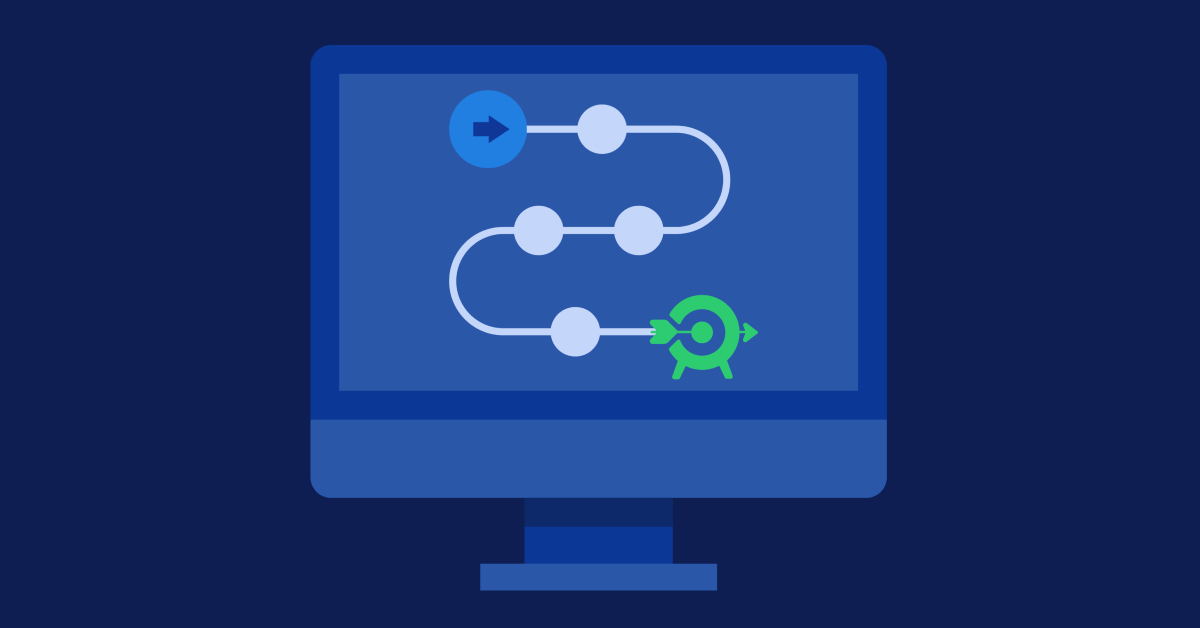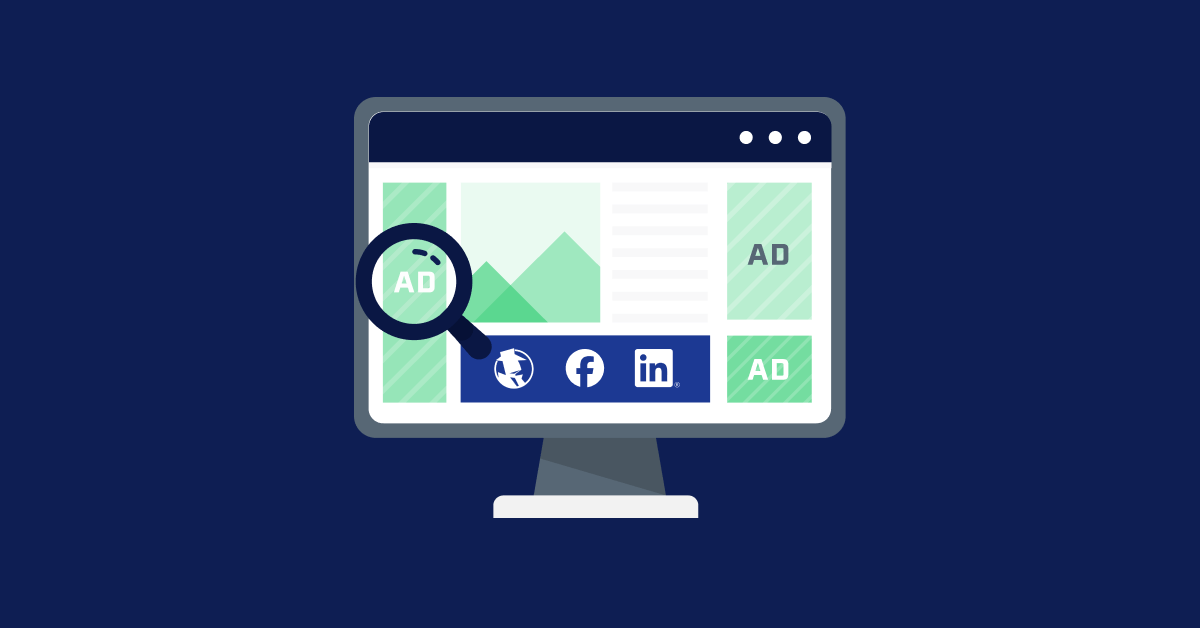Can you clearly visualize your customer journey? Mapping out a customer journey allows you to understand how your marketing efforts integrate and identify the high-impact optimization points. Watch CEO Harry J. Gold assemble six customer journeys in just eight minutes.
Video Transcript
Here’s Anna. She’s a chief information security officer or CISO leader. Okay. And we are advertising to Anna on behalf of RSA with paid search, display, and, of course, LinkedIn. And we’re offering a report on the state of cybercrime, and you know that RSA is one of the largest and best-known security brands out there. They run the RSA conference, or they started the RSA conference. So, if they put out a cyber security report, people typically want it. It’s a good mouth-of-the-funnel asset. So, we land our prospect, we land Anna, our CISO leader, on this landing page where we’re showing the cover of the report. And obviously, we’re encouraging her to fill out the form and then something magical happens, okay? The first time you get someone to land on your website, it’s a really important moment. Why? Because we’re shaking hands with them for the first time, we’re setting all these cookies on their browsers; good stuff like that’s happening. And, of course, we’re tracking the clicks and all that. So, Anna lands here, we set all these cookies, she fills out the form, and then we give her this nice thank-you page, right? We’re not just like, “Hey, here’s the white paper,” or “We emailed you the white paper; you can go now.” We’re like, “Nope. Here’s the white paper. Oh, and by the way, here’s an engaging video. Here’s more navigation.” Let’s keep Anna engaged. Let’s not have our go back to Google and click on a competitor’s ad, right?
So, after that, now the sort of customer journey starts. Well, we automatically fire off an auto-reply email from sales. Okay? And then, of course, all that information goes into the stack. Now, Anna does not respond to phone calls or emails from the sales reps. So, what do we do? Now we’re going to nurture email. And it’s not just any nurture; it’s not just nurturing Anna with email. We have a cookie on Anna’s browser, and we have her email address. So now we can do retargeting and custom audience targeting on LinkedIn and places like that. So we’re really surrounding Anna with our brand and our content. She’s getting emails; she’s seeing LinkedIn ads; she’s seeing display ads. It’s a real always-on ABM program that’s pulling Anna into our brand embrace and surrounding her with our brand and content. And what are we doing? We’re selling the conversation to Anna. We’re trying to get her to request a demo. So, now Anna does finally say, “Okay,” you know, after watching some videos or consuming different white papers, “Hey, I’ll check out a demo.” So, she goes to this demo landing page, she fills it out, and now the sales rep can go look at our whole engagement history and lead score, have the meeting, close the deal, and loop that back into the stack and put it in a nice dashboard. Okay?
This is an entire customer journey, and I know it seems like a lot, but a lot of these higher consideration technology products, you know, they have a long sale cycle. So, you really want to stay with your prospect in an always-on way. Now, there’s another thing that I want to talk about here. When you do journey mapping like this, so sometimes you’re standing up a new journey, but sometimes you go in and this journey might exist, but it might have been built by someone who’s not even at the company anymore. So, when we lay out these customer journeys a couple magical things happen. Number one, how everything integrates together is instantly revealed for you. Number two, the high points of optimization are going to really jump out at you. You know, where your media can be better, where your landing pages can be better, what e-mails aren’t getting high open or click-through rates, what banners aren’t getting high click-through rates. All of these things that you can A/B test, you know, across your customer journey are going to jump out at you. So this is how you get the really amazing results. Not just doing one optimization action, but by doing cross-channel optimization, looking across your whole journey and saying, hey, what can I improve right now? And secondly, the things that are broken, those are going to jump out at you right away. And I’ve never met a journey that wasn’t broken. Very often, pages aren’t rendering; content is obsolete; APIs between MarTech systems aren’t connected, so your tracking isn’t working, or your leads aren’t flowing into the right place, or they’re not being auto-segmented. There’s so many things that can go wrong. So again, what we do for our clients is usually go in, map out the whole journey and see what can be fixed very quickly. And what this provides is early wins. I mean, before you even figure it out or redid your media, you’re already improving things by fixing what is broken and applying best practices to those high points of optimization.
Now, here’s the cool thing, right? We’ve done so many of these journeys, and it’s always the same ingredients. It’s always medium, lead capture at the top, nurture retargeting custom audiences in the middle, and then closing the deal and dashboarding on this bottom rung. And it’s always the same set of ingredients, different target audiences, but really, the same ingredients. And it could be Tech B2B. It could be Healthcare. This is a patient journey for Lehigh Valley Health Network. Here is an education Journey for Ben, Franklin Institute of Technology. So, a student Journey. Here’s a commercial banking journey, right? All the same stuff, you know, targeted media, the full marketing stack, some sort of nurture campaign, closing the deal, and getting it all on a dashboard.
So this is the whole thing about, you know, ABM and demand gen. It’s all part of a customer journey, and the whole idea is to build it and keep it on in an always-on way. Now, let me just say one thing, you know, if you’re doing this and you run out of media money, that’s okay because people are still moving down the journey. So, we have clients who kind of will put in a bunch of media money at the mouth of the funnel, and this whole thing lights up like a Christmas tree. Okay? And it’ll die down, and then when they need to feed it some more, they turn the media back on. So, obviously, this is a big journey, right? With all of the fixings, right? It’s got your search, it’s got your media, it’s got your MarTech, and it’s got the full nurture campaign. Not every Journey has to be so complex. I mean, you may have a micro journey, right? But you still have to map it. You still have to make sure all the components are working. Okay? So, again, your journey may just be some ads that go to a landing page, and you capture that, and, you know, you’re measuring the results. And that’s okay, but typically these journeys evolved into something more like this. Because after a while, you have all of these leads sitting in your CRM system, and you want to start to harvest some fruit from the orchard you already own. And that’s your CRM system and all the leads they are in. So usually, people are starting with this ABM or micro journey, but they’re expanding it to something bigger because they want to get more traction with that database of targeted prospects that they’ve built up.
Want to analyze your customer journey? Let Overdrive interactive audit your customer journey by breaking down the essential ingredients that take a prospect from impression to sale and recommend what tactics you can employ to improve campaign performance and sales velocity. Contact us today to learn more about our SEO services for enterprise businesses worldwide.





